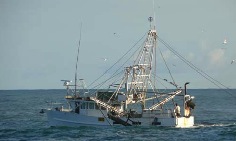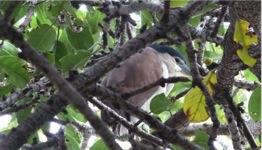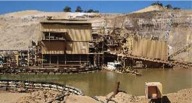Every friend of Stradbroke Island cherishes its bushland. Pandanus and pigface, casuarinas and crinum lilies — these and a host of other plants adapted to sand and salt wind are a living part of the island’s charm. But they are menaced by weeds. Take the section of the foreshore reserve bordered by Kennedy Drive, for example. For years now the original banksias have been succumbing to old age and the prevailing winds, but the seedlings that should replace them don’t stand a chance — they’ve been crowded out by a rolling carpet of asparagus fern, dotted with the inglorious gloriosa lily. Caring for the bush ... Bushcare volunteers have been removing weeds, replanting natives and educating the public at Point Lookout for 10 years. Ten years ago, Jan and Bruce Johnman and Judy and Mike Hines resolved to make a concerted effort to “Fight the Blight”. They rounded up like-minded locals, enlisted the support of the Council, and founded Point Lookout Bushcare. Now, with its nurser







